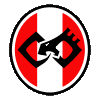| Brood Brother |
 |
 |
Joined: Mon Dec 26, 2005 6:38 pm
Posts: 1673
Location: Chattanooga, TN, USA
|
|
Well, one of the guiding principles behind the game is to use as simple a mechanic as possible to represent real-world situations.
1. Skimmer pop-up. I would rule that the "shadow" created by a terrain between popping up skimmer and target is equal to range to end of the terrain, i.e. if the skimmer is 20cm away from a terrain feature 10cm wide, the non-seen area is 30cm, not 20cm (like the current rules are). This is especially clear in situations like 5cm to terrain, 50cm of woods and then enemy within 10cm of the woods - in current rules, the skimmer would be able to see the enemy which is just silly (it would require skimmer to rise to 4x height of the terrain)
The current "revised" pop-up rule is a compromise. Lots of people wanted to have a terrain shadow as you described, but the current rule involves less measuring (it often only requires an eyeball) and gives more to the skimmer than your suggestion. Why is that important? Well, because the SM and IG skimmers were given point costs to reflect their ability to pop-up and see anywhere on the table. This is restricted by the new rule, but not as much as yours would. In any case, what's wrong with a skimmer popping-up 4x the height of the terrain? Skimmers aren't hovercraft, they're anti-grav and/or VTOL vehicles - they can go up as high as they please.
2. Chains of objective control. Those long lines of formations are just silly. I might change that a single formation can only control single objective. If it is close to two, it controls the one it is closer to (if it is standing on the top of two, then enemy chooses so do not leave formations like that  ) )
This seems like an opinion more than anything, and you're welcome to it. Strung out formations have enough going against them (try an assault on one end) that you don't need this rule. Also, if no enemy is around, why shouldn't one formation control two or three, or even 6 objectives at once? Besides, not all armies will have enough activations to be able to split up and cover things individually.
3. Intermengling and a very long unit chain. I would rule that the attacker can choose to intermengle as many formations as earlier, but if any of those formations is not withihn 15cm of the attacker after all charges and counter-charges, they are dropped from the engagement. Thus the attacker would have no point to include a formation on the other half of the game board if the attacker is sure that it would never reach the engagement - including it would only give it a free counter-charge.
I don't disagree with you here, but I do think that any problems that a player encounters due to intermingling only happen once, then the player just becomes more careful. In fact, in groups I've played with, we automatically position units to actively avoid intermingling.
4. rout move. I might rule that the falling back unit is not allowed to move closer to enemy (in ranges less than 30cm). The exception to this is the initial rout move from engagement, on which the units are allowed to temporarily move closer to enemy but the main move must be away from the original direction of the attack (the direction from which the charging formation started its move). Thus, if a formation is attacked from west, it must move away to direction between north-east-south, instead of making a rout move through the enemy into west. As soon as unit is at least 15cm away from the enemy, it can change its course.
(this is a bit tricky rule but I'm a bit bored of those oddities of using the rout move to charge through the enemy to cover the objective behind them)
I understand where you're coming from with this, but there are other rules that mitigate this problem. First, a broken unit can't claim/contest and objective on the turn that it rallies. Second, staying within 30 cm of an enemy formation (or moving to a position that the opponent could easily send another formation to) makes it that much harder to rally. Anyway, whats to say that the best cover isn't around behind you, where there might be woods or ruins?
|
|






